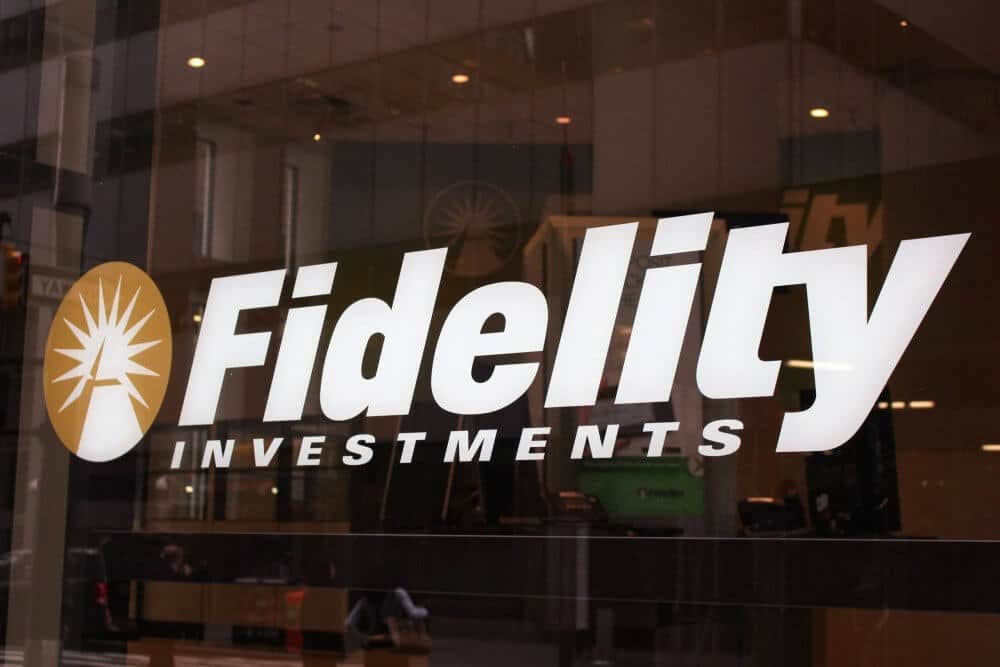There are a number of dividend mutual funds out there that focus on profits. The best high dividend funds from Fidelity and Vanguard can be excellent long-term investments as well as good sources of current income at retirement. Let’s find out if dividend mutual funds are a good match for you and which Fidelity and Vanguard funds are the best fit for your income goals.
What Are the Benefits of Investing in Dividend Mutual Funds?
- Dividend funds usually invest in dividend-paying large-cap stocks of high quality. Dividends may be used as a source of income or as a means of long-term capital development. To earn dividend payouts from mutual funds, the investor usually chooses between receiving a check in the mail or a direct deposit to their bank account.
- Dividend mutual funds can be suitable investment options for retirees due to their income-generating value. Long-term investors seeking capital growth typically choose to have the dividends purchase additional shares of the fund rather than accepting them as profits.
- In low-interest rate settings, some investors use dividend mutual funds as an alternative to bonds and bond funds because they pay higher returns than bonds. Stocks, on the other hand, have a greater chance of losing principal than bonds. Dividend mutual funds, which are also grouped with value stock funds, are less aggressive (risky) than growth stock mutual funds as compared to other stock funds.
How Do Mutual Funds Pay Dividends?
Mutual funds invest in dividend-paying stocks. Dividends from these constituent stocks are paid out at various intervals. For example, funds that follow a dividend reinvestment policy reinvest the earned dividend sum back into the stocks. Other funds implement the dividend payment scheme by accumulating dividend income over a monthly, quarterly, or even six-month cycle and then paying account holders a periodic dividend.
But for the most part, after expenses, a fund pays taxes. If a fund’s dividend-paying constituent stocks generate a consistent yield, those expenditures may be covered entirely or partly by dividend income. However, d ividend income can be tax-free depending on local rules, which increases the benefits to investors.
It’s also worth noting that businesses aren’t obligated to pay dividends on their shares. Dividend-paying mutual funds, rather than individual stocks, could be a better choice for investors looking for dividend income, as the former aggregates the available dividend income from multiple stocks.
Read Also: How to Spot High Yield Investments (Easy Guide)
Takeaways
- Several mutual funds pool dividends from various stocks and either reinvest them or distribute them to account holders.
- The best dividend mutual funds should have low expense ratios and high yields because dividends are paid after fees.
Mutual Funds with the Best & Highest Dividends
Here are the best high-dividend-paying mutual funds. Comparing a mutual fund’s yield to the yield of the benchmark S&P 500 index is a useful benchmark for gauging a fund’s dividend-paying efficiency. For each fund listed below, the trailing twelve months (TTM) fund yield values are included.
Best 3 High Dividend-Paying Fidelity Mutual Funds

The fund’s 30-day SEC Yield, also known as the 30-day yield or the SEC Yield, is the most important factor to consider when looking for the right fidelity funds for dividends. A high yield is one that is higher than average as compared to other stocks or equity mutual funds.
We looked at Fidelity’s domestic equity funds that are classified as “gain-driven,” or those that pay higher-than-average dividends, to find the best high dividend-paying Fidelity mutual funds. The three with the highest yields were then chosen.
In other words, the best FidelityDividend mutual funds with above-average yields are as follows:
Fidelity Equity Dividend Mutual Fund
In terms of annualized returns, Fidelity Equity Income (FEQTX) is an average performer. However, its yields are among the best among Fidelity stock funds. The fund mainly invests in large-cap value stocks in the United States that pay dividends higher than the S&P 500 index’s average yield. Chevron Corp (CVX), Wells Fargo (WFC), and Johnson & Johnson are among the top holdings (JNJ). Furthermore, FEQTX has a 30-day yield of 2.95 percent and a low-cost ratio of 0.60 percent. To begin investing in this fund, there is no minimum initial investment.
Fidelity Growth and Income Dividend Mutual Fund
The Fidelity Growth and Income Portfolio (FGRIX) is another fund that doesn’t always outperform the group averages but excels in generating income for investors through dividends. The portfolio has a 90 percent U.S. stock allocation and a 10% global stock allocation. The emphasis on capitalization is on large-cap stocks. Furthermore, General Electric (GE), Microsoft (MSFT), and Exxon Mobil (XOM) are among the top holdings (XOM).
General Electric (GE), Microsoft (MSFT), and Exxon Mobil (XOM) are among the top holdings (XOM). FGRIX has a 30-day yield of 2.03 percent and a relatively low loss ratio of 0.61 percent. To begin investing in this fund, there is no minimum initial investment.
Read Also: PALLADIUM ETF: Best Practice And All You Should Know Simplified
Fidelity Equity Income Dividend Mutual Fund
Fidelity Strategic Dividend & Income (FEQIX) regularly ranks among Fidelity’s best dividend-paying mutual funds. The portfolio is made up of large-cap value companies, with the financial and healthcare industries having the largest concentration. JP Morgan Chase (JPM), Berkshire Hathaway (BRK/B), and JNJ are among the top holdings. Furthermore, FEQIX has a 30-day yield of 1.93 percent and a fair cost ratio of 0.61 percent. To begin investing in this fund, there is no minimum initial investment.
Best 4 High Dividend-Paying Vanguard Mutual Funds

The next set of mutual funds constitute some of the highest paying Vanguard mutual funds in terms of dividends. They are also open to US citizens and investors across the globe. But while there are tons of other funds out there, these four should be on every investor’s watchlist.
Vanguard High Dividend Yield Mutual Fund (VHDYX)
VHDYX is an index fund that aims to replicate the FTSE High Dividend Yield Index’s results. This index includes stocks from companies that pay higher-than-expected or above-average dividends. VHDYX is an index fund that invests in the same proportions as the benchmark stock constituents. Since its founding, this fund has paid quarterly dividends on a regular basis. Furthermore, it has one of the lowest expense ratios of 0.14 percent. Also, it has the most recent fund yield of 2.92 percent TTM, despite being an index fund. Obviously, this is an ideal low-cost fund for those seeking higher-than-average dividend income.
Vanguard Equity Index Fund (VEIRX)
This fund invests in slow-growing yet high-yielding large and mid-cap domestic U.S. firms. The fund aims to invest in undervalued businesses that pay out above-average and high dividends. This fund has been paying quarterly dividends on a consistent basis. As shown by dividend payout history, this fund has a history of paying higher payouts, especially in the month of December (albeit sporadic). It has a 0.18 percent cost ratio and a 3.48 percent TTM fund yield.
Vanguard Dividend Appreciation Mutual Fund (VDAIX)
VDAIX is an index fund that tries to match the performance of the NASDAQ US Dividend Achievers Select Index. This one-of-a-kind index includes stocks that have increased their dividend payouts over time. VDAIX is an index fund that invests in the same proportions as the benchmark stock constituents. Since its founding, this fund has paid quarterly dividends on a regular basis. This index fund has one of the lowest cost ratios in the industry, at 0.14 percent, and a current yield of 1.84 percent.
Vanguard Dividend Growth Fund (VDIGX)
This fund mainly invests in a diversified portfolio of large-cap (and sometimes mid-cap) U.S. and international companies that are undervalued in comparison to the market and have the ability to pay regular dividends. The fund’s research aims to find businesses with high earnings growth potential. This results in higher dividends, which boasts the management’s ability to raise dividend payouts. It has a 2.25 percent TTM yield. It also pays semi-annual dividends with an expense ratio of 0.22 percent.
Other High Dividend-Paying Mutual Funds
These mutual funds neither fall under the Vanguard or Fidelity category, but disburses pretty high dividend payouts.
T. Rowe Price Dividend Growth Fund (PRDGX)
PRDGX invests in large to mid-cap stocks with above-average earnings and dividend growth, based on the premise that increasing dividends over time are positive indicators of a company’s financial health and growth. It invests in both domestic and international companies across a wide range of industries. Though the latter’s share is typically in the single digits. But despite the fact that its current yield of 1.23 percent TTM is lower than the S&P 500 Index’s yield of 2%, this fund provides a decent balance of growth and dividend income. It has a 0.64 percent cost ratio and a history of quarterly dividend payments, indicating that it is an actively managed fund.
Read Also: Financial Investment: Best Guide for Optimal results(+ Detailed Courses)
Federated Strategic Value Dividend Fund
Are you tired of quarterly dividends and want to receive payouts more frequently? SVAAX pays out dividends on a monthly basis. This fund identifies companies with high growth potential for future dividend payouts and dividend-oriented value characteristics by investing in large and mid-cap US and international stocks and American depositary receipts (ADRs). It has a 1.06 percent cost ratio and a 3.65 percent TTM fund yield.
Neuberger Berman Equity Income Fund (NBHAX)
This fund invests in high-dividend-paying equities, such as common stocks, REITs, convertible preferred stock, convertible securities, and financial instruments such as call and put options. Its aim is to outperform the S&P 500 Index benchmark in terms of average yield. It currently pays a dividend yield of 2.23 percent. Also, it pays quarterly dividends and has a 1.06 percent cost ratio.
Columbia Dividend Opportunity Fund (INUTX)
INUTX has a diverse portfolio of holdings, including common stocks, preferred stocks, futures, and structured instruments for both domestic and international securities of various market capitalizations. The payment of dividends is the primary criterion for selecting securities. It has a 1.03 percent cost ratio and a current dividend yield of 3.19 percent. It has been paying quarterly dividends on a consistent basis.
Are High Dividend Funds a Good Investment?
Investing in dividends can be a great way to make money. In the past, dividend stocks have done better than the S&P 500 and been less volatile. This is because dividend stocks offer two ways to make money: regular income from dividend payments and price growth. Over time, this return can add up.
Does the S&P 500 Pay Dividends?
More than 80% of these businesses give out dividends. play a big part in figuring out the returns that equity investors get. Dividends can help investors who buy funds that track the S&P 500 Index get a better return on their money. More than 80% of the 500 large companies in the index pay dividends.
Will I Get Dividend if I Buy Mutual Funds?
Mutual funds are obliged to distribute all net income in the form of dividends to shareholders, including interest received on debt securities such as corporate and government bonds, Treasury bills and notes.
How Much Should I Invest in Dividend Funds?
Hence, according to this rule, 60% of your portfolio’s worth should be invested in stocks. And 40% in bonds. Then, you may choose to invest the amount in stocks. And allocate a third to dividend stocks, growth stocks, and international companies, respectively.
Final Thoughts
Dividends are paid on a regular basis, which depletes the company’s working capital. Instead, by reinvesting dividend money back into the business, the company could have produced higher returns, resulting in stock price appreciation. Furthermore, dividend payments reduce the benefits of compounding. Before investing in high dividend-paying mutual funds, investors seeking regular dividend income should keep these drawbacks and effects in mind.
On the other hand, Fidelity’s dividend funds may be good investments for investors looking for immediate incomes or a mix of growth and income.
Fidelity also offers a strong array of high-yield bond funds as an income alternative to dividend-paying equity funds. Before adding assets to a portfolio, investors should always consider their risk tolerance and investment objectives.
- MUTUAL FUNDS UPDATED: 15+ Best Mutual Funds in 2023 (+ Detailed Beginners’ Guide)
- PAYMENT DATE: 2023 Dividend, SSI stimulus & SSA Stimulus Dates (Updated)
- Understanding Dividend Stocks and How to Invest
- Dividend Yield Formula: Definition and Detailed Examples
- HEDGE FUNDS VS MUTUAL FUNDS: 7 key Difference You must know
- Sec Yield: 30-Day Sec Yield Definition and Calculations
- Understanding Yield Curve with Ease (Detailed Explanation)






